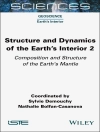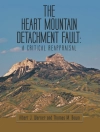Basin Analysis is an advanced undergraduate and postgraduate text aimed at understanding sedimentary basins as geodynamic entities. The rationale of the book is that knowledge of the basic principles of the thermo-mechanical behaviour of the lithosphere, the dynamics of the mantle, and the functioning of sediment routing systems provides a sound background for studying sedimentary basins, and is a pre-requisite for the exploitation of resources contained in their sedimentary rocks. The third edition incorporates new developments in the burgeoning field of basin analysis while retaining the successful structure and overall philosophy of the first two editions.
The text is divided into 4 parts that establish the geodynamical environment for sedimentary basins and the physical state of the lithosphere, followed by a coverage of the mechanics of basin formation, an integrated analysis of the controls on the basin-fill and its burial and thermal history, and concludes with an application of basin analysis principles in petroleum play assessment, including a discussion of unconventional hydrocarbon plays. The text is richly supplemented by Appendices providing mathematical derivations of a wide range of processes affecting the formation of basins and their sedimentary fills. Many of these Appendices include practical exercises that give the reader hands-on experience of quantitative solutions to important basin analysis processes.
Now in full colour and a larger format, this third edition is a comprehensive update and expansion of the previous editions, and represents a rigorous yet accessible guide to problem solving in this most integrative of geoscientific disciplines.
Additional resources for this book can be found at: www.wiley.com/go/allen/basinanalysis .
Table of Content
Companion website details x
Preface to the third edition xi
Part 1 The foundations of sedimentary basins 1
1 Basins in their geodynamic environment 3
Summary 3
1.1 Introduction and rationale 3
1.2 Compositional zonation of the Earth 6
1.3 Rheological zonation of the Earth 8
1.4 Geodynamic background 10
1.5 Classification schemes of sedimentary basins 15
2 The physical state of the lithosphere 20
Summary 20
2.1 Stress and strain 21
2.2 Heat flow 31
2.3 Rock rheology and lithospheric strength profiles 43
Part 2 The mechanics of sedimentary basin formation 51
3 Basins due to lithospheric stretching 53
Summary 53
3.1 Introduction 54
3.2 Geological and geophysical observations in regions of continental extension 56
3.3 Uniform stretching of the continental lithosphere 72
3.4 Modifications to the uniform stretching model 78
3.5 A dynamical approach to lithospheric extension 88
3.6 Estimation of the stretch factor and strain rate history 95
4 Basins due to flexure 98
Summary 98
4.1 Basic observations in regions of lithospheric flexure 99
4.2 Flexure of the lithosphere: geometry of the deflection 104
4.3 Flexural rigidity of oceanic and continental lithosphere 109
4.4 Lithospheric buckling and in-plane stress 116
4.5 Orogenic wedges 118
4.6 Foreland basin systems 131
5 Effects of mantle dynamics 153
Summary 153
5.1 Fundamentals and observations 154
5.2 Surface topography and bathymetry produced by mantle flow 164
5.3 Mantle dynamics and magmatic activity 178
5.4 Mantle dynamics and basin development 181
6 Basins associated with strike-slip deformation 188
Summary 188
6.1 Overview 189
6.2 The structural pattern of strike-slip fault systems 194
6.3 Basins in strike-slip zones 201
6.4 Modelling of pull-apart basins 209
6.5 Characteristic depositional systems 217
Part 3 The sedimentary basin-fill 223
7 The sediment routing system 225
Summary 225
7.1 The sediment routing system in basin analysis 226
7.2 The erosional engine 227
7.3 Measurements of erosion rates 246
7.4 Channel-hillslope processes 256
7.5 Long-range sediment transport and deposition 260
7.6 Joined-up thinking: teleconnections in source-to-sink systems 273
8 Basin stratigraphy 284
Summary 284
8.1 A primer on process stratigraphy 285
8.2 Stratigraphic cycles: definition and recognition 289
8.3 Dynamical approaches to stratigraphy 308
8.4 Landscapes into rock 315
9 Subsidence history 326
Summary 326
9.1 Introduction to subsidence analysis 327
9.2 Compressibility and compaction of porous sediments: fundamentals 327
9.3 Porosity and permeability of sediments and sedimentary rocks 330
9.4 Subsidence history and backstripping 335
9.5 Tectonic subsidence signatures 339
10 Thermal history 343
Summary 343
10.1 Introduction 344
10.2 Theory: the Arrhenius equation and maturation indices 344
10.3 Factors influencing temperatures and paleotemperatures in sedimentary basins 345
10.4 Measurements of thermal maturity in sedimentary basins 354
10.5 Application of thermal maturity measurements 361
10.6 Geothermal and paleogeothermal signatures of basin types 367
Part 4 Application to petroleum play assessment 371
11 Building blocks of the petroleum play 373
Summary 373
11.1 From basin analysis to play concept 374
11.2 The petroleum system and play concept 374
11.3 The source rock 379
11.4 The petroleum charge 393
11.4.1 Some chemical and physical properties of petroleum 393
11.5 The reservoir 402
11.6 The regional topseal 415
11.7 The trap 419
11.8 Global distribution of petroleum resources 434
12 Classic and unconventional plays 436
Summary 436
12.1 Classic petroleum plays 437
12.2 Unconventional petroleum plays 442
12.3 Geosequestration: an emerging application 449
Appendices: derivations and practical exercises 455
1 Rock density as a function of depth 457
2 Airy isostatic balance 459
3 Deviatoric stress at the edge of a continental block 461
4 Lateral buoyancy forces in the lithosphere 463
5 Derivation of flexural rigidity and the general flexure equation 465
6 Flexural isostasy 468
7 The 1D heat conduction equation 470
8 Derivation of the continental geotherm 472
9 Radiogenic heat production 473
10 Surface heat flow and the radiogenic contribution 475
11 Radiogenic heat production of various rock types 477
12 Effects of erosion and deposition on the geotherm 479
13 Effects of variable radiogenic heating and thermal conductivity on the geotherm in the basin-fill 481
14 The mantle adiabat and peridotite solidus 485
15 Lithospheric strength envelopes 487
16 Rift zones: strain rate, extension velocity and bulk strain 490
17 The ‘reference’ uniform extension model 492
18 Boundary conditions for lithospheric stretching 494
19 Subsidence as a function of the stretch factor 496
20 Inversion of the stretch factor from thermal subsidence data 497
21 Calculation of the instantaneous syn-rift subsidence 499
22 The transient temperature solution 501
23 Heat flow during uniform stretching using a Fourier series 503
24 The stretch factor for extension along crustal faults 505
25 Protracted rifting times during continental extension 507
26 Lithospheric extension and melting 508
27 Igneous underplating – an isostatic balance 509
28 Uniform stretching at passive margins 510
29 Flexure of continuous and broken plates 511
30 The time scale of flexural isostatic rebound or subsidence 513
31 Flexural rigidity derived from uplifted lake paleoshorelines 515
32 Deflection under a distributed load – Jordan (1981) solution 516
33 Deflection under a distributed load – numerical solution of Wangen (2010) 517
34 Deflection under a periodic distributed load 519
35 Flexural unloading from a distributed load – the cantilever effect 520
36 Bending from multiple loads: the Hellenides and Apennines in central Italy–Albania 522
37 Flexural profiles, subsidence history and the flexural forebulge unconformity 524
38 Bending stresses in an elastic plate 525
39 In-plane forces and surface topography during orogenesis 527
40 The onset of convection 529
41 A global predictor for sediment discharge: the BQART equations 530
42 Modelling hillslopes 532
43 The sediment continuity (Exner) equation 534
44 Use of the stream power rule 535
45 Effects of tectonic uplift on stream longitudinal profiles 537
46 Estimation of the uplift rate from an area-slope analysis 539
47 Uplift history from stream profiles characterised by knickpoint migration 540
48 Sediment deposition using the heat equation 541
49 Axial versus transverse drainage 542
50 Downstream fining of gravel 545
51 Sinusoidal eustatic change superimposed on background tectonic subsidence 546
52 Isostatic effects of absolute sea-level change 547
53 Sea-level change resulting from sedimentation 548
54 The consolidation line 549
55 Relation between porosity and permeability – the Kozeny-Carman relationship 550
56 Decompaction 551
57 Backstripping 555
58 From decompaction to thermal history 556
59 Advective heat transport by fluids 562
60 Heat flow in fractured rock 563
References 564
Index 603
About the author
Philip Allen graduated with a Bachelor’s degree in Geology from the University of Wales, Aberystwyth and a Ph D from Cambridge University. He held lectureships at Cardiff and Oxford, and professorships at Trinity College Dublin, ETH-Zürich and Imperial College London. He is a process-oriented Earth scientist with particular interests in the interactions and feedbacks between the solid Earth and its ‘exosphere’ through the critical interface of the Earth’s surface.
John Allen has over 30 years of experience in the international oil and gas industry as a petroleum geologist, exploration manager, senior exploration advisor, and business strategist with British Petroleum (BP) and BHP Billiton, as well as several years of experience as a non-executive director. He is currently based in Melbourne, Australia.












